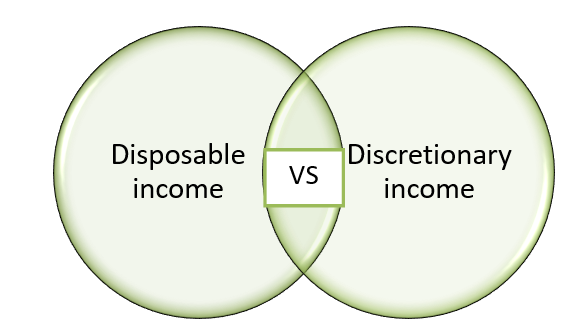Disposable Income
Updated on 2023-08-29T11:59:11.864816Z
What is disposable income?
Disposable income can be defined as the in-hand salary of a person after deducting the amount of tax payable from the net salary. It can also be referred to as disposable personal income (DPI). The disposable income is utilised by every individual to pay for every essential or non-essential product and service such as house rent, bill payment, essential needs of the family, child's education, recreational activities, travel, etc.
Disposable income is also utilised to determine various other economic factors such as discretionary income, personal savings rate, marginal propensity to consume (MPC), and marginal propensity to save (MPS).
Summary
- Disposable income can be defined as the in-hand salary of a person after deducting the amount of tax payable from the net salary.
- It can be calculated by subtracting tax payable from the total salary of an individual.
- Disposable income is a crucial factor to determine a lot of other economic factors, such as discretionary income.

Image source: © Yobro10 | Megapixl.com
Frequently Asked Questions (FAQ)
How can disposable income be described?
The leftover money remaining with an individual after paying all the taxes to the state is known as disposable income or disposable personal income. The four types of deductions made to derive disposal salary are income and property taxes, health care, unemployment insurance and social security.
The amount of money paid to the government for permits, retirement plans, licence is all deducted from the net salary to obtain the disposable income. Apart from that, disposable income is also an essential factor for economists to determine the demand. They analyse both disposable income and discretionary income to understand the demands of the people and by which means the money is spent by them and the amount that is saved.
How to calculate disposable income?
The formula to calculate disposable income is:
Disposable income = Personal Income - Personal Taxes
For example, let us assume that the annual salary of Alex is $100,000 and the annual tax payable is 25 percent. Therefore, his disposable income would be $100,000 - (25% of $100,000), which results in $75,000.
Disposable income can be calculated both for individuals as well as for a nation.
What is per capita disposable income?
Disposable income is one of the most crucial factors that determine the economic condition of a nation or region. The database of disposable income is of great use to government officers and analysts. These data help them to carry out their analysis wherein they observe the consumer's ability to make a purchase, make payment and accumulate savings for the future.
What is the importance of disposable income?
Disposable income is utilised in multiple ways by economists and analysts. The first and the most critical usage of disposable income is to analyse the stats of the economy. It can also be used to understand the household financial reserve by analysing the expenditure and savings of a household. Another economic factor that can be derived from disposable income is the discretionary income which indicates the money that is left with an individual after spending on the essential things.

Image source: © Lovelyday12 | Megapixl.com
Deducting the expenses of house rent, bills, mortgage, etc., the remaining amount is considered discretionary income. Thus it can be said that discretionary income is considered as a part of disposable income. The earning candidate can either choose to spend this money on buying luxurious and non-essential things or save it for the future.
During an economic downfall or a job loss, the discretionary income tends to reduce. Therefore, any amount that is saved from the salary after spending money on essentials goes directly for savings or retirement planning.
What is the contrast between discretionary income and disposable income?
Disposable income indicates the amount of money that is left with an individual after the deduction from the government taxes. This money is utilised by the individual to afford all the necessary items such as food, bills, house rent, education, mortgage, financial liabilities, essential family needs, etc. Discretionary income is a part of disposable income. Thus it can be said that discretionary income is derived from disposable income.

Image source: Copyright © 2021 Kalkine Media
Discretionary income refers to the amount of money that is left with an individual after he is done with spending on essential items. The discretionary income is utilised by an individual to afford either luxury items and non-essential things or simply save them for future use. This money can also be utilised for financial investment activities. Discretionary income can be calculated by subtracting disposable income from the total in-hand salary of an individual.
Example of discretionary income:
Let us assume that the annual salary of a Chloe is AU$ 100,000 per year. She spends up to AU$ 70,000 approximately in the year on his taxes, bill payment, essential family needs, education of children, etc. The remaining AU$ 30,000 is considered as her discretionary income. This income can be utilised in order to buy non-essential items, which are typically referred to as discretionary goods. This money can also be utilised for investments such as buying shares or insurances. This money can also be saved in the bank account for future use. In all three cases, a person contributes to the economy of the nation in various way.
The formula of discretionary income is:
Discretionary income = Total income – (Tax payable + cost of necessities)
Purchasing a luxury item contributes to the growth of the business. Investing in shares and life insurances can strengthen the power of those businesses where people invest. Saving money allows you to indirectly lend your money to small businesses through the bank for their growth. Thus, it can be rightly concluded that in all three cases, a person is contributing to the development of business and economy of a nation.